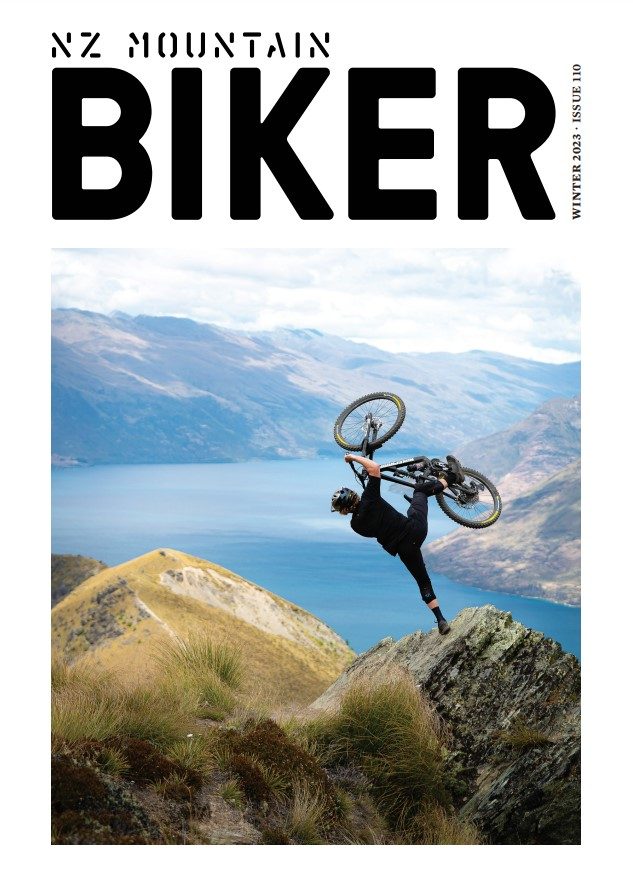WORDS: GAZ SULLIVAN
DISTRIBUTOR: TREK NZ
RRP: $12,999
I am not privy to the think tank at the centre of Trek Bikes, so what follows is pure guesswork, but here goes: Nearly two decades ago, Trek broke ranks and named their flagship trail bike after the top category of that very American petrol-head sport of drag racing. From its very beginnings, in the 1940s, the simple competition between two vehicles over a standing start quarter mile has been a technical arms race. And, the first thing those early hot rodders did to get an advantage over the guy in the other lane, was to figure out how to use something more volatile than pump petrol into the engine.
The stuff they focused on is nitromethane. Various amounts of it definitely makes more horsepower. Mixed with a number of other ingredients to make engines start reliably and not tear themselves apart immediately, nitro was called ‘the poor man’s supercharger’. Then they added superchargers, and squeezed phenomenal power out of a V8 motor.
To differentiate the entrants running on regular petrol from the engines running on anything else, a category was added to racing classes called ‘Fuel’.
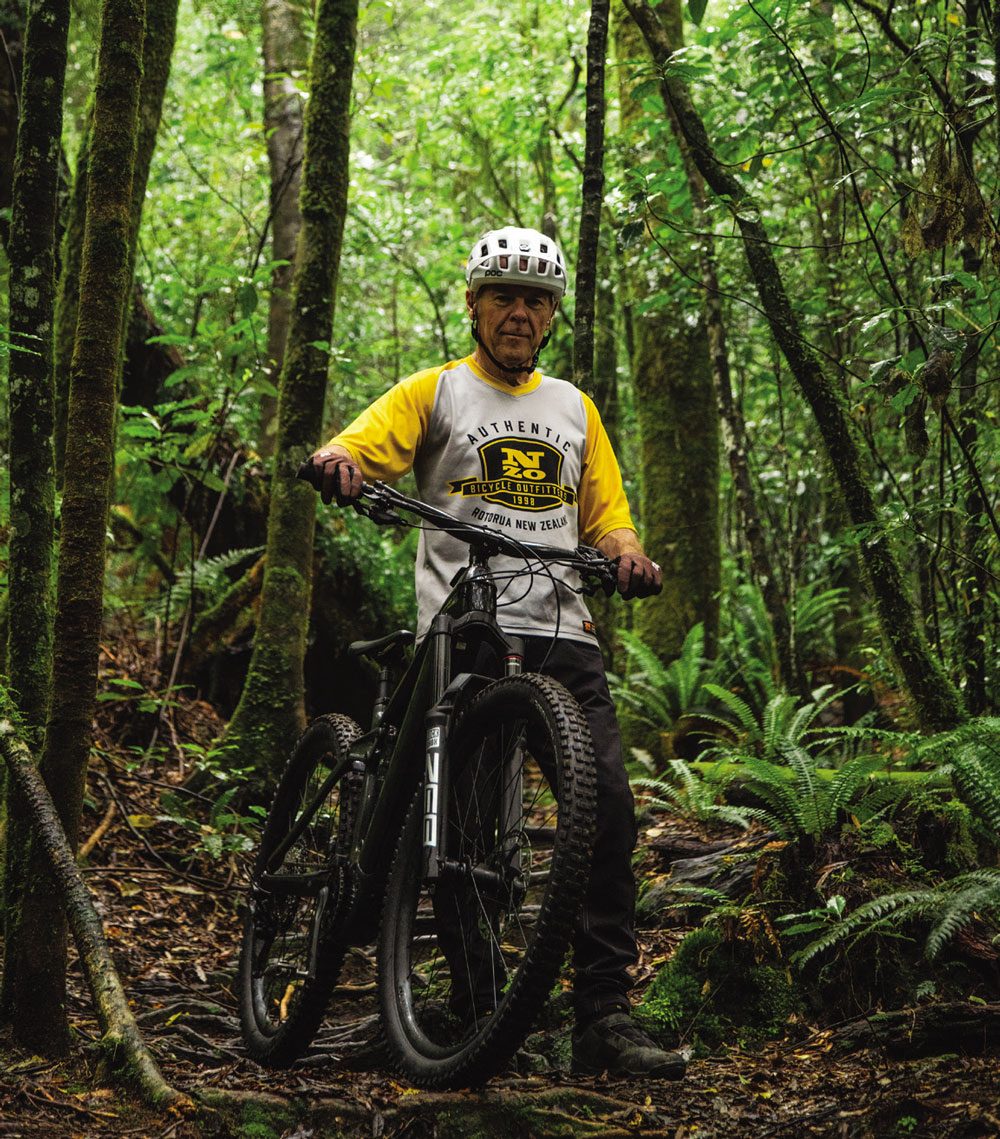
If there was any doubt that Trek was referring to nitro when they named the Fuel line, they dispelled that by adding a model called Top Fuel a few years later: that is the name of the blue ribbon event of drag racing, the fastest, most explosive, and most specialised class of the sport.
The first dragsters were simple contraptions, usually a 1930s Ford with the body removed and the engine set back toward the rear of the vehicle, and some sort of crude accommodation for the driver, aft of the engine. Because the main members of the chassis were frame rails, the cars become known as ‘rails’. As things got more sophisticated, and custom-made machines were fabricated from lightweight tubing, the name stuck. The fastest things on a drag strip were rails.
When Trek launched its flagship eBike, they slapped the name ‘Rail’ on the top tube, further cementing my belief that any other possible meaning associated with the name could be ignored: it was another tip of the hat to the dragsters.
The latest incarnation of the Trek Rail is the third iteration of a simple design, based on the time-proven system shared by the Fuel and the Slash. Like its four-wheeled namesake, the design is fairly brutal and unapologetic. No attempt is made to hide the Bosch power plant, and the Rail 9.8’s massive 750 watt battery is an obvious part of the bike’s architecture, not really hidden in the gargantuan down tube. It’s an obvious eBike, and wears its heart on its sleeve.
To further connect the bike to its hot rod DNA, is a sparkly metallic ‘prismatic’ paint job and big decals that look like chrome.
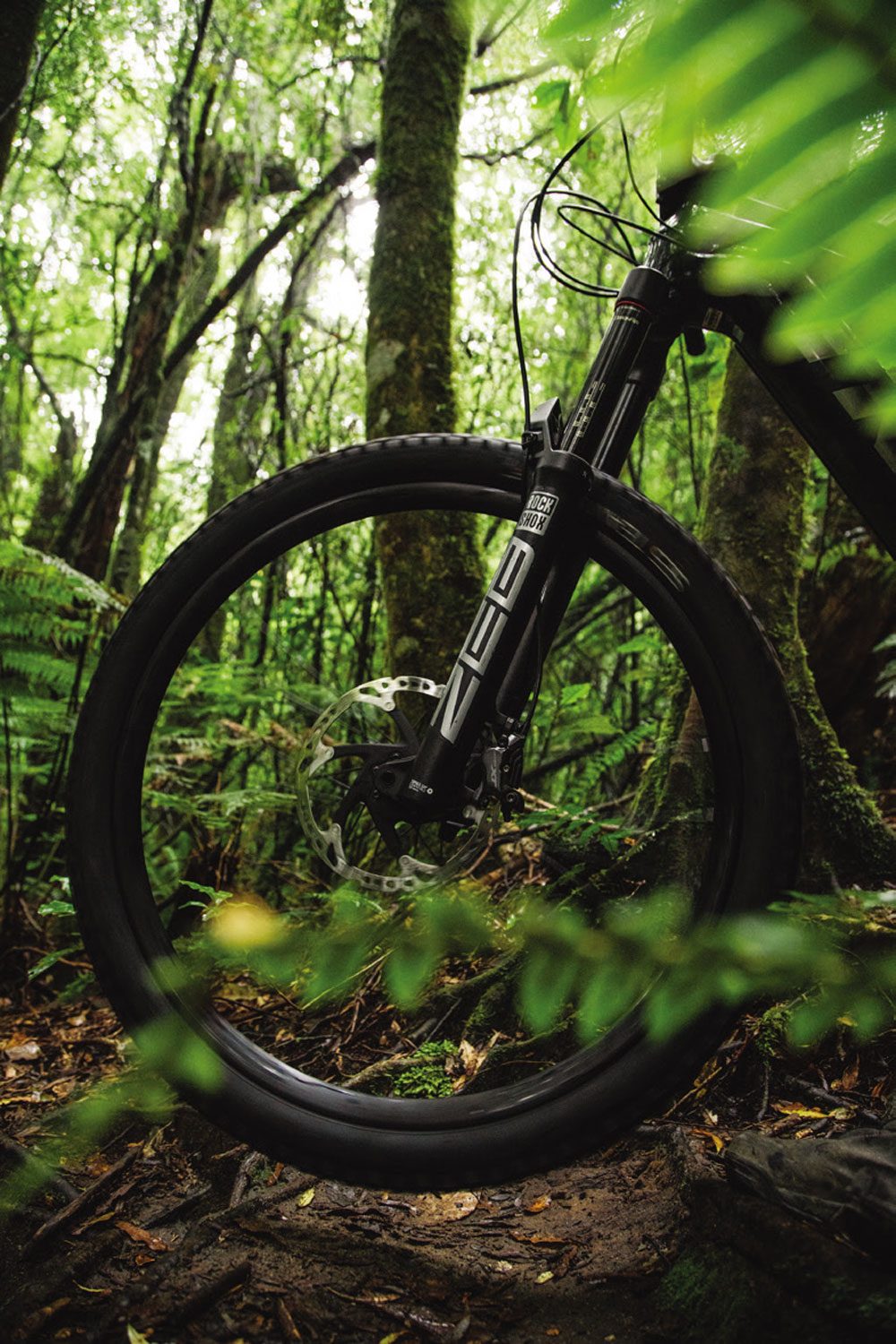
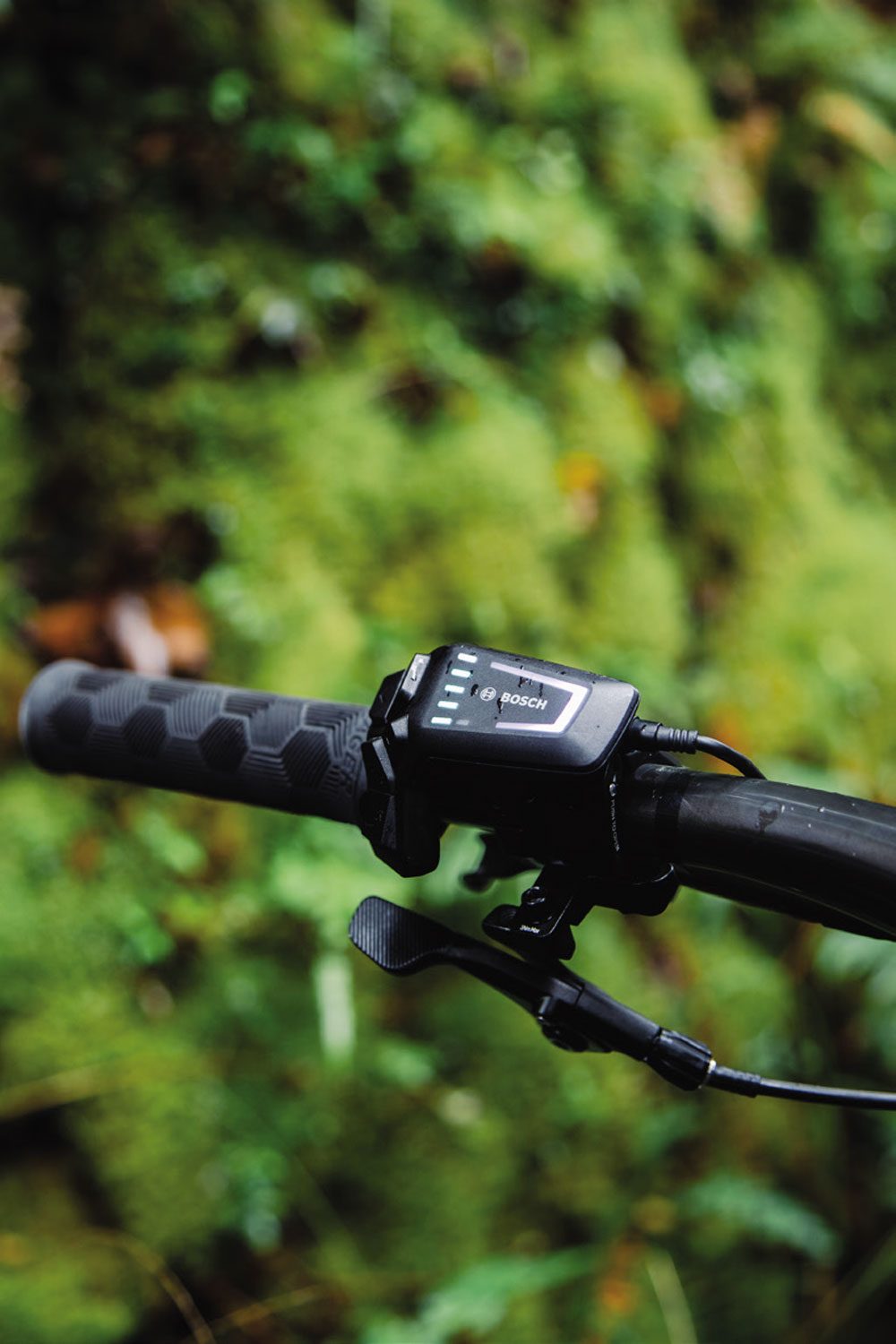
Out of the box, the 9.8 has an epic set-up. A full carbon frame offers 150mm travel and is teamed up with a RockShox Zeb fork, providing 160mm travel up front. It comes with a tough Bontrager 29 inch wheelset that stayed true and gave no trouble over a three month review period where I clocked up over 1100kms on the bike. It is possible to mulletise the bike with the assistance of a Trek dealer to make the necessary adjustments to the Bosch system for correct speed readings and power output. Mostly Bontrager components wear a full set of Shimano XT shifters, drivetrain and brakes.
Geometry is aimed at going fast on trails: a head angle of 64.2 degrees in the low setting of the adjustable rear suspension flip chip Trek calls a ‘Mino-Link’, and a longish frame reach of 45.2 cm.
The Bosch Performance CX Line motor has a reputation for reliability and, on the trail, it was surprisingly quiet compared to other eBikes I have shared rides with. The Bosch motor does emit a fair amount of clatter on downhills, however.
The details are nicely handled, a removable battery has a pop-out handle for carrying it indoors for charging, or to keep it safe while your sled is hanging on the back of the truck. You can access the internal cable routing while the battery is out. The bike has a neat little flap over a charging port on the seat tube, so you can charge it while the battery is installed.
Charging takes quite a few hours from low to full charge, but is worth the wait once you get on the trail. The battery is a seriously well-endowed source of grunt.
Last year, I was lucky enough to write up a NZ Mountain Biker review of the Trek Fuel EX e, and I was amazed by how much I liked the e-assist. I reckoned the Fuel EX e was the ideal bike for a mountain biker, with a bit of fitness and experience, looking to go a bit further or squeeze more trail out of a busy schedule. Now I can directly compare the EX e to the Rail, and I think that still holds true.
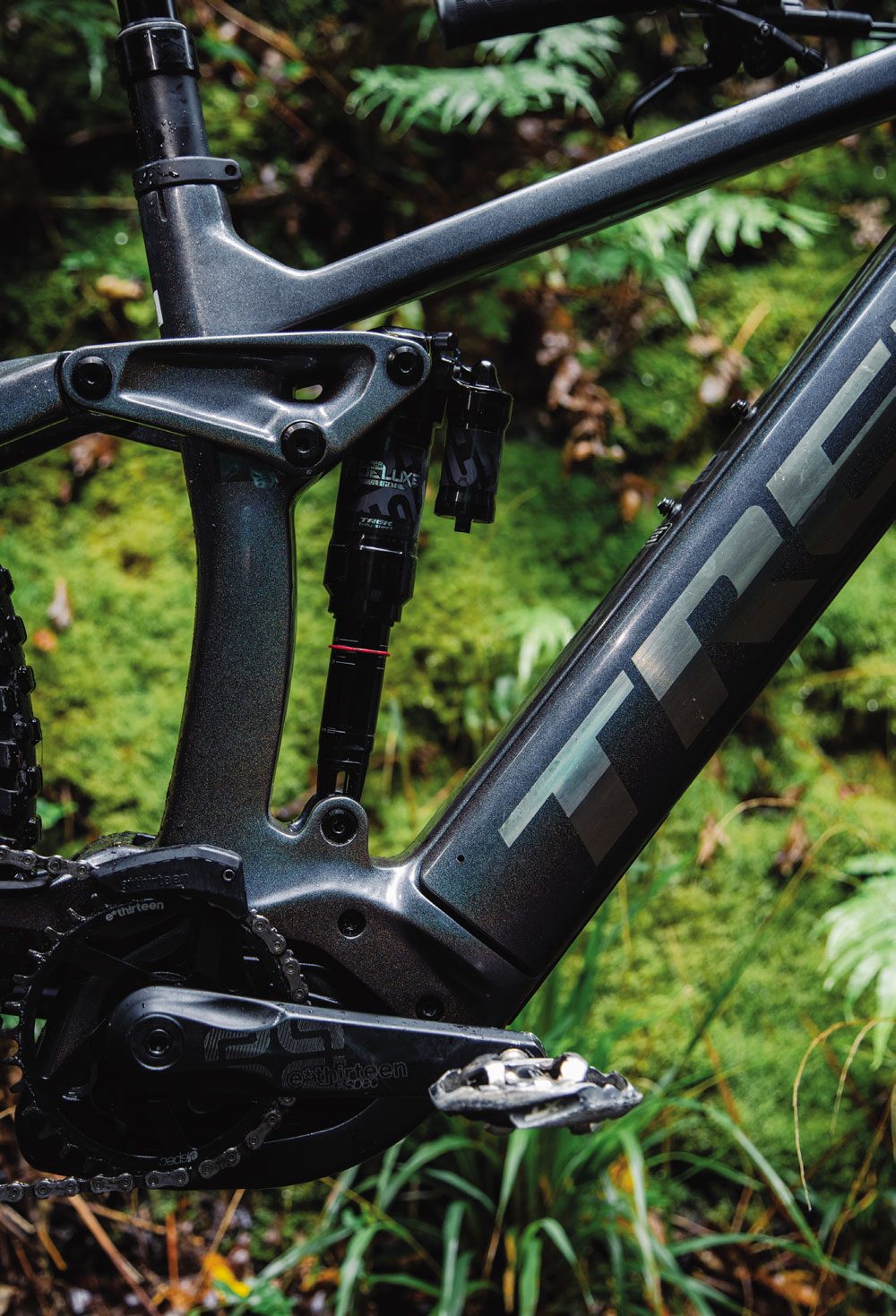
The Rail can take anybody to the top of just about any climb with comparative ease. But, put it in the hands of a rider with a bit of fitness and experience, and riding it becomes a different sport.
The brute power of the bike is amazing. I found myself looking for very steep things to ride up. At 85nm of torque it isn’t the most powerful bike available, but I am not sure more power would be much use – it’s fun figuring out how to dole out the horses without overcooking the available traction.
The range of the bike is equally impressive. My last outing before the sad day I had to hand it back was a case in point.
I rode 62.6kms, climbed almost 2000m, and averaged over 20km/hr. Most of that was on-trail. There is no way I would have chosen the route I took on my pedal bike, and if I did I would have been out for a very long time.
The Bosch Smart System – which the 9.8 shares with the XTR 9.9 Model – is a slick and feature-packed interface with the bike’s power system. A clear readout panel sits on the top tube. A neat little cluster of buttons sits out by the left grip, with on/off on top of the cluster, two buttons for moving through the display options, an ‘ok’ button – which also acts as a scrolling button for the display screen – and two buttons for choosing the power mode. In addition, the control cluster has a colour-coded LED graphic that lets you know what power mode you are in. More on that later!
There is a lot of information available via the display. The first screen shows battery percentage, power mode and current speed. Toggle the selector through the screens and you get similar info in more detail: larger readouts of battery level, distance covered this ride, distance remaining at current power mode, current and average speed, current and average cadence, and much more.
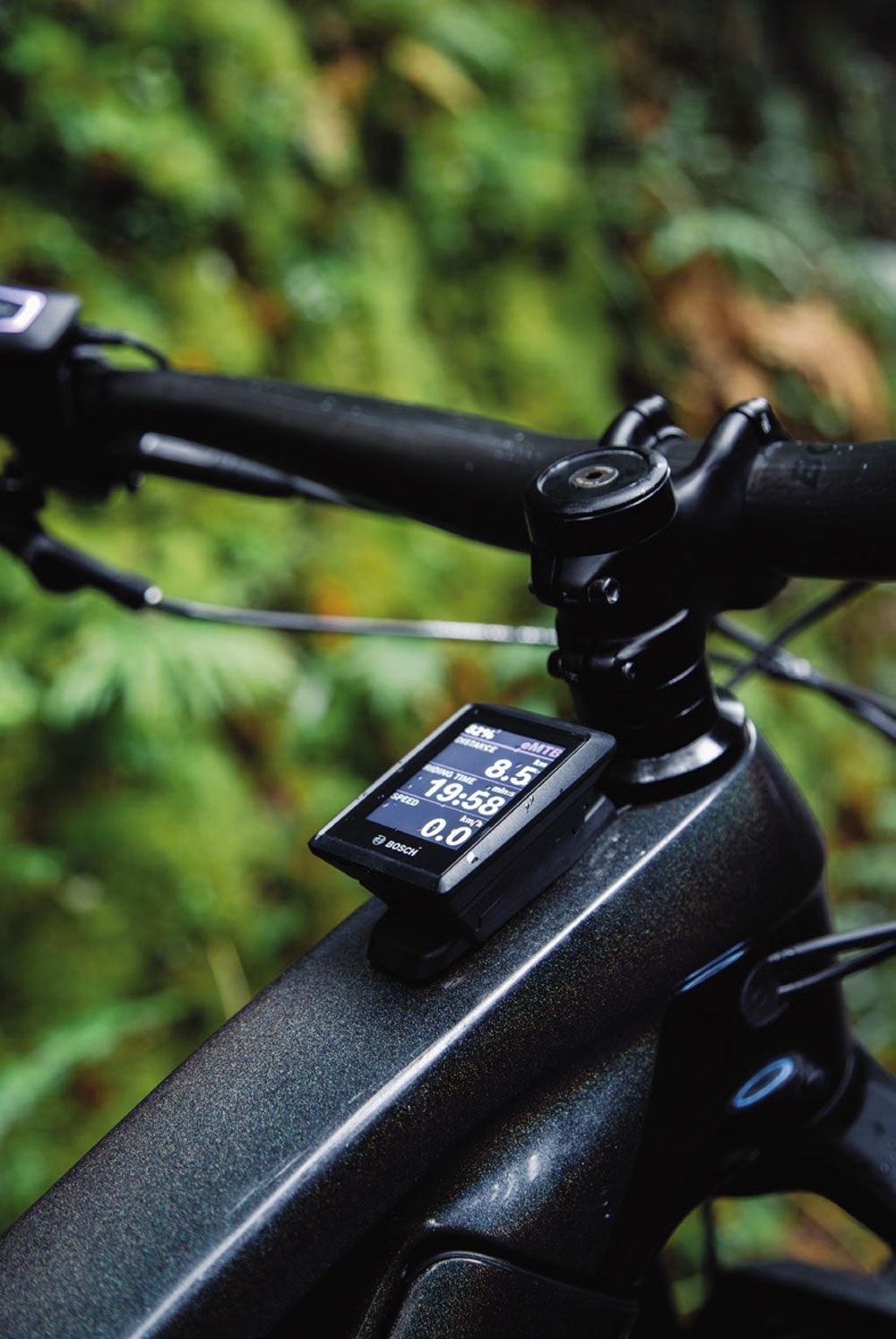
The system integrates with an app available for a more modern phone than the vintage iPhone I was using at the time of the review, so I can’t say how that works. Based on how slick the system is in use, I expect it is good.
The modes of power available on the 9.8 are the same as the rest of the Trek Rail line. You have Eco, Tour, Emtb, and Turbo. In my dozens of rides aboard the Rail, I can’t say I ever used Eco. I am sure it would be useful for something, when that mode is selected the range claim is over 100 kilometres. But, seriously folks, this thing is an eBike, so why not E the snot out of it?
The ride I mentioned earlier, that covered a good chunk of my local patch and included some very hard climbing, was completed in Emtb all the way.
Emtb is the sweet spot. It is intuitive, an attempt by Bosch to determine what the rider is trying to do, dishing out power as optimally as the onboard computing can deliver. Like the other modes, it measures the watts the rider is putting in and multiples them, but it also responds to short and extreme bursts by continuing to supply power if the rider backs off briefly, making short work of tricky root sections on steep climbs. Once a rider becomes accustomed to this delivery of extra power it is really useful for conquering technical climbs.
I tried Tour mode from time to time on rides, and noted that the assist is similar to Emtb but gentler, and the range is increased. Turbo is full power, but Emtb has the same power when you need it and just feels better and more natural.
The extra weight of the bike is only really apparent when lifting it into the van, or if it ends up on top of you – which, I confess, happened to us a few times. On the trail, the e-assist easily overcomes the 23.4kilograms of heft, and I think the extra weight down low makes going downhill on the bike a lot of fun.
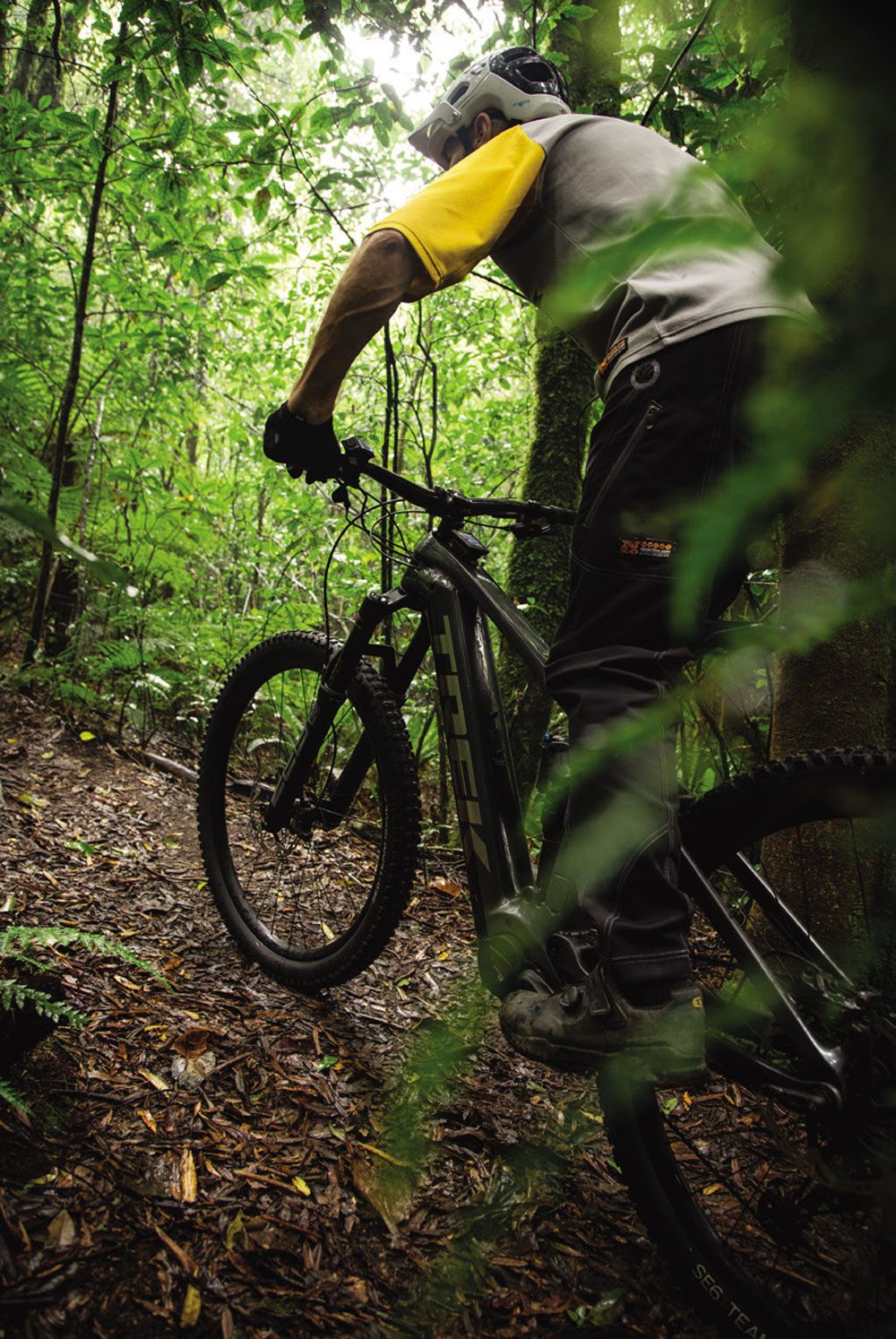
The suspension design of the bike teams up with the RockShox dampers to deliver a well-balanced ride. The Zeb fork is a good partner for a big bike like the Rail, with stiff 38mm legs keeping the front wheel going where you point it. The custom-tuned Super Deluxe shock out back has a thrust-shaft design that provides a very supple feel.
The generally-downhill-oriented geometry of the bike makes hauling ass a lot of fun on any trail, and I was surprised how often I came up against the only minor riding niggle I experienced with the Rail. It is speed-limited at 32kph for the New Zealand market. At that speed, the power simply stops being delivered. On the EX e that speed-limiting factor was easy to ignore because the power system is disengaged from the pedal power of the bike. The Rail has a different approach, so when the motor stops assisting, you are driving the motor with the pedals. It goes from punching you forward to feeling like a real drag on the pedals, instantly.
The Rail is a bike that I liked immediately, and grew to like even more as the test period extended. Because the bike was in the shed, and I knew at some point it wouldn’t be, I rode it almost exclusively. Switching back to the pedal bike was tough, because the power of the Rail is so front-and-centre of the ride experience. Getting used to the speed of the bike on all sorts of terrain made getting aboard a plain old mountain bike feel very slow and drab.
A couple of rides on the regular bike removed that feeling, and all was well with the world – but the rides that are on tap with the Rail make a strong case for having one in the rack.
